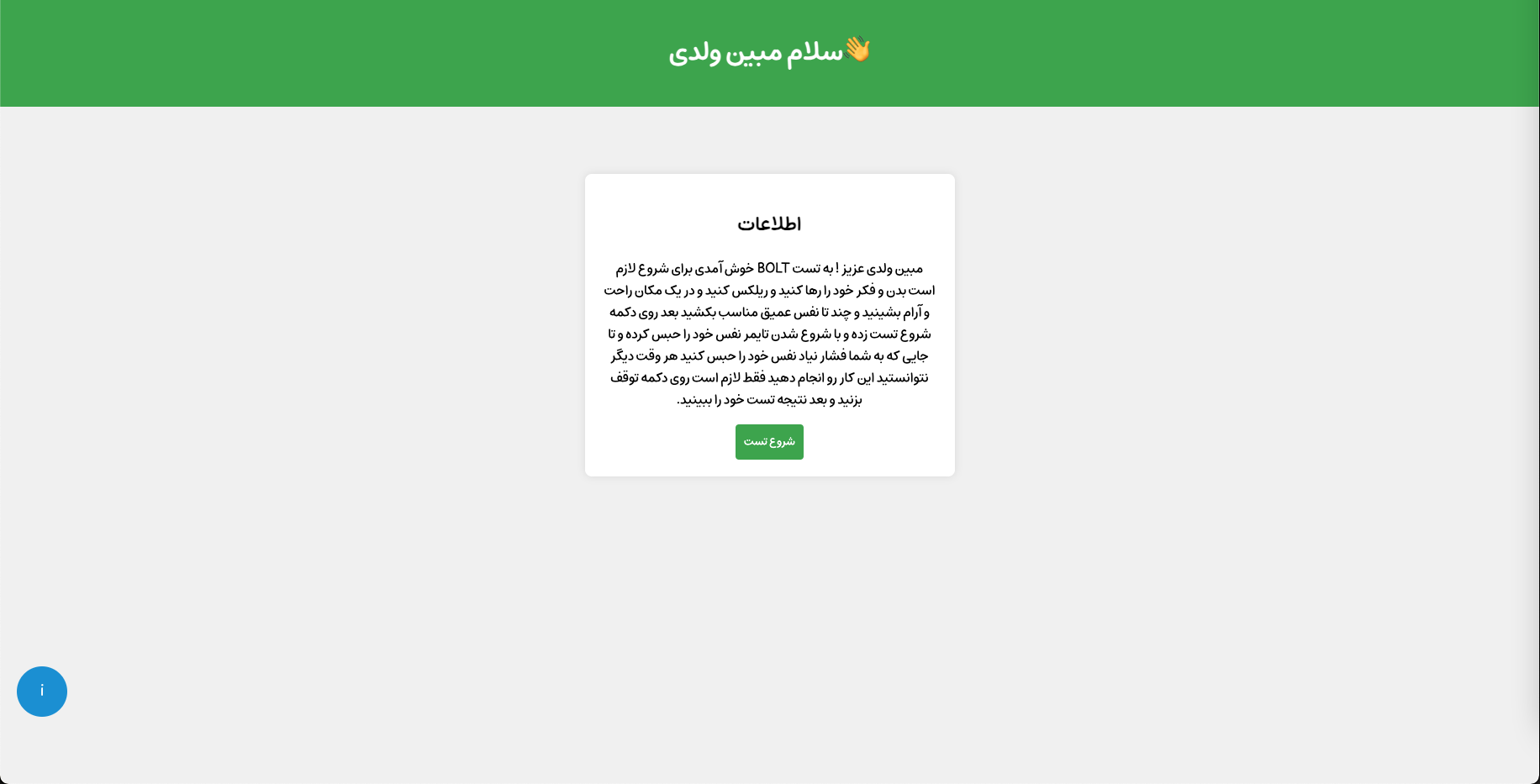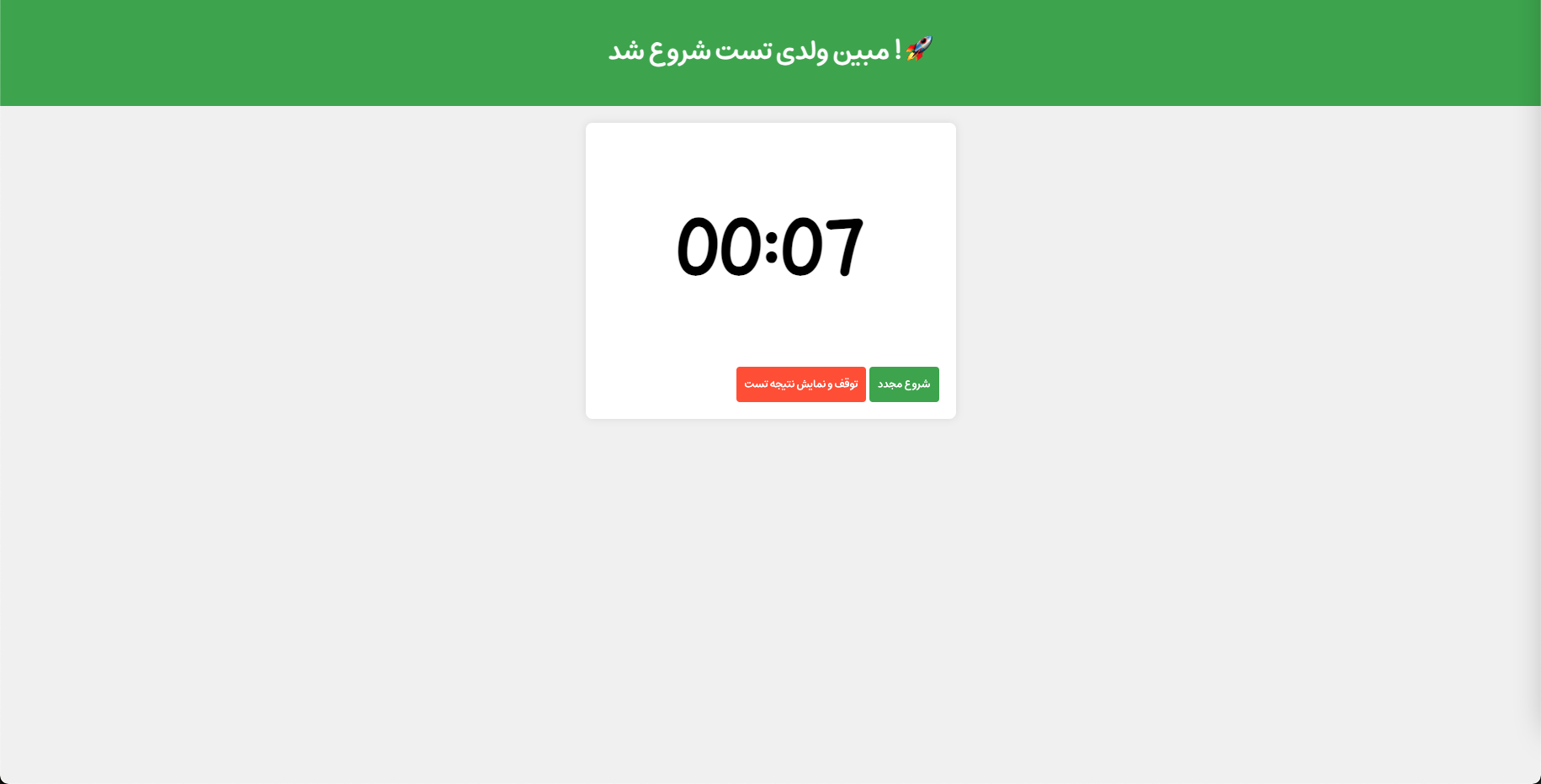https://github.com/rojcode/bolt
🌬️ BOLT Breath Test:Assess your breathing volume and endurance with the Body Oxygen Level Test (BOLT). Measure your comfortable breath hold to understand your respiratory health. A higher BOLT score indicates improved endurance and reduced breathlessness during exercise. 🌬️
https://github.com/rojcode/bolt
bolt bolt-breath-test bolttest health js rojcode webapplication
Last synced: 10 months ago
JSON representation
🌬️ BOLT Breath Test:Assess your breathing volume and endurance with the Body Oxygen Level Test (BOLT). Measure your comfortable breath hold to understand your respiratory health. A higher BOLT score indicates improved endurance and reduced breathlessness during exercise. 🌬️
- Host: GitHub
- URL: https://github.com/rojcode/bolt
- Owner: rojcode
- License: mit
- Created: 2024-02-25T22:20:23.000Z (almost 2 years ago)
- Default Branch: main
- Last Pushed: 2024-02-25T22:43:22.000Z (almost 2 years ago)
- Last Synced: 2025-01-21T09:48:41.991Z (11 months ago)
- Topics: bolt, bolt-breath-test, bolttest, health, js, rojcode, webapplication
- Language: JavaScript
- Homepage: https://rojcode.github.io/BOLT/
- Size: 189 KB
- Stars: 0
- Watchers: 1
- Forks: 0
- Open Issues: 0
-
Metadata Files:
- Readme: README.md
- License: LICENSE
Awesome Lists containing this project
README
# BOLT Score and Breathing Assessment
As far back as 1975, researchers noted that the length of time of a comfortable breath hold can be used to determine relative breathing volume during rest and breathlessness during physical exercise [1,2].
The **Body Oxygen Level Test (BOLT)**, which involves an easy breath hold after exhalation, is a useful and accurate way to measure this relative breathing volume.
The ideal BOLT score for a healthy adult is 40 seconds. In the book *Exercise Physiology: Nutrition, Energy, and Human Performance* by William McArdle and colleagues, the authors observe: “If a person breath holds after a normal exhalation, it takes approximately 40 seconds before the urge to breathe increases enough to initiate inspiration” [3].
The lower your BOLT score in seconds, the greater your breathing volume is likely to be. The greater your breathing volume, the more breathlessness you will experience during exercise.
## How to Measure Your Breathing Using the BOLT Score
To get an accurate measurement, it’s best to rest for ten minutes before measuring your BOLT score. Read the instructions carefully first. And have a timer to hand. On a day-to-day basis, we recommend taking the test first thing in the morning, but if you’re ready to try now, go ahead.
**Instructions:**
1. Take a normal breath in through your nose and allow a normal breath out through your nose.
2. Hold your nose with your fingers to prevent air from entering your lungs.
3. Start your timer.
4. Time the number of seconds until you feel the first definite desire to breathe or the first stresses of your body urging you to breathe.
5. Release your nose, stop the timer, and breathe in through your nose. Your inhalation at the end of the breath hold should be calm.
6. Resume normal breathing.


## What Will My BOLT Score Be?
Many people begin with a low BOLT score. In people with asthma, anxiety, and panic disorder, the BOLT score may only be 10 to 15 seconds. If your BOLT score is low, don’t worry. Even elite athletes often begin with a low BOLT score. The exercises in the OA™ quickly help you improve.
The BOLT score is influenced by several factors:
- Chemosensitivity to carbon dioxide (CO2)
- Constriction in the airways or lungs (narrow airways impact breath-hold time)
- How uncomfortable the diaphragm feels during the breath hold
- Anxiety and other psycho-emotional influences like fear of suffocation
If you have a breathing pattern disorder, you won’t be able to hold your breath for long. But with daily practice of breathing exercises, breathing will normalize. Your breathing rate will slow too. When your BOLT score is 40 seconds, the typical breathing rate is 8 to 10 breaths per minute.
## How Your BOLT Score Relates to Breathlessness During Sports
The first time you measure your BOLT, you may be surprised to find your score is lower than expected. But remember, even elite athletes can have a low BOLT score! Your BOLT score can easily be improved with a series of simple breathing exercises that incorporate into your existing way of life or exercise regime.
### Your BOLT Score in Seconds — What to Expect
- **BOLT is Below 10:** Your everyday breathing is noisy, irregular, and labored. Breathing exercises for breathlessness will dramatically improve your health and performance.
- **10-20:** Your breathing may be compromised by a blocked nose, wheezing, or coughing. Breathing exercises to increase the BOLT score will improve sleep quality, reduce breathlessness, and enhance health and fitness.
- **20-30:** Your normal breathing is quiet, calm, and effortless. A BOLT score of around 20 seconds is good. But there are benefits for health and fitness if you can improve it even more.
If you exercise regularly at a moderate intensity, it’s normal for your starting BOLT score to be around 20 seconds. Each time your BOLT score increases by five seconds, you will feel better. You’ll have more energy and your breathlessness during physical exercise will lessen.
By practicing the breathing exercises, you will reduce your sensitivity to CO2. You will see a progressive increase in your BOLT score. And you will “reset” the breathing center in your brain, meaning less breathlessness during rest and exercise. The aim of the OA™ program is to increase your BOLT score to 40 seconds, and this can be realistically achieved.
Improving your BOLT score is an important key to attaining greater physical endurance too. When your tolerance to carbon dioxide improves, you can achieve a higher VO2 max and enhance performance. The Oxygen Advantage® program is all about increasing your BOLT score and maximizing your potential!
## How to Increase Your BOLT Score
**It’s a Breath Hold After the Exhalation — Here’s Why:**
When someone tells you: “Hold your breath,” the normal instinct is to first take a big breath in. But breath holding after inhalation is an unreliable way to test the breathing. Lung capacity differs from one person to the next. And some people are much more competitive than others!
## How Does the Body Oxygen Level Test (BOLT) Work?
Scientists have shown that breath hold time can be used to measure sensitivity to carbon dioxide (CO2). When you hold your breath, you prevent oxygen from entering your lungs. At the same time, you prevent excess carbon dioxide from being expelled into the atmosphere. As your breath hold continues, carbon dioxide accumulates in your lungs and blood. Oxygen levels slightly decrease.
CO2 provides the main stimulus to breathe in. As CO2 increases in your lungs and blood, your brain reacts, prompting your breathing muscles to begin breathing. This means that the length of your comfortable breath hold is influenced by how much carbon dioxide you can tolerate —your “ventilatory response” to carbon dioxide [1].
When you have a strong ventilatory response to carbon dioxide, you’ll reach your threshold sooner. You’ll have a shorter breath hold time. When you have a higher tolerance and reduced ventilatory response to carbon dioxide, your breath hold will be longer. A low BOLT score just indicates that your breathing receptors are especially sensitive to carbon dioxide. Your breathing volume will be larger, as your lungs work to remove carbon dioxide. You’ll be in a sort of vicious cycle, in which you’re habitually breathing more air than your body needs, yet you feel constantly breathless.